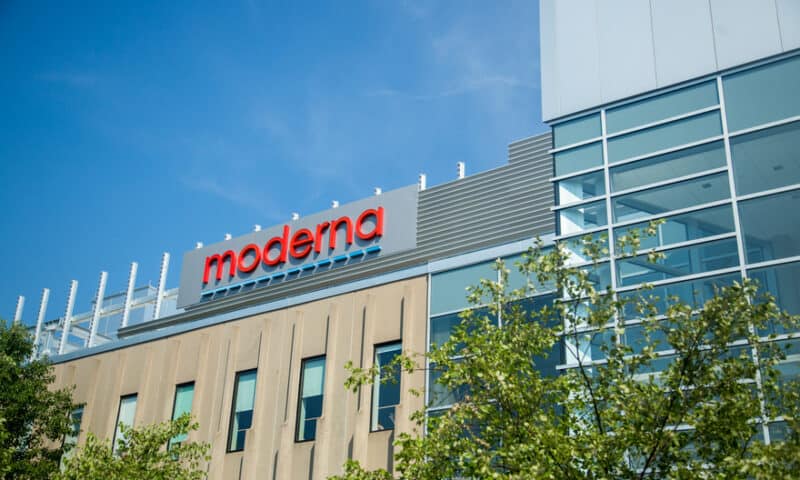Last month, Moderna posted “robust” phase 1 results for its COVID-19 vaccine in adults up to age 55. Now, it’s following up with data from a small group of older adults—and they look promising.
The phase 1 study, being run by the National Institute of Allergy and Infectious Diseases, is testing three dose levels of the vaccine, mRNA-1273, given in two injections a month apart in 120 adults. As seen in 45 younger adults, the middle dose of the vaccine triggered the production of neutralizing antibodies against SARS-CoV-2, the virus that causes COVID-19, in 10 patients aged 56 to 70 and 10 patients over 71. Moderna presented the data on Wednesday at a meeting of the CDC’s Advisory Committee on Immunization Practices (ACIP).
The investigators found that the older adults’ antibody levels were two to three times higher than those measured in 38 patients who had recovered from COVID-19. Compare that to the results from younger adults—one test found that the middle dose, 100 micrograms, triggered antibody levels that were four times higher than those seen in recovered patients, while a different test found those patients had twice the antibody level of the recovered patients. Whichever way you slice it, it’s good news, wrote Jefferies analyst Michael Yee in an investor note at the time.
Older adults suffered similar side effects to their younger counterparts—the most common effect was pain at the injection site, followed by fatigue, muscle pain, headache and chills. Side effects were more common after the second dose of the vaccine. There were no serious side effects.
Despite the “robust” responses, it is still unclear if high levels of neutralizing antibodies will indeed protect people from SARS-CoV-2. But if the new coronavirus works the way other respiratory viruses do, it’s reasonable to expect high levels of neutralizing antibodies to correspond with protection. And Moderna acknowledged in its presentation that its data so far come from “a fairly homogeneous population” and that it needs to test the vaccine in children, pregnant women and people with a compromised immune system.
A phase 2 study is testing doses of the vaccine, 50 mcg and 100mcg, in 600 patients split into two groups: adults under 55 and those over 55. And a phase 3 trial is under way, which will test the 100 mcg dose in 30,000 patients in the U.S. Dubbed the COVE study, it will look at whether the vaccine can ward off symptomatic COVID-19 infection as well as whether it can prevent patients from needing hospitalization.
Beyond making enough doses for the phase 3 program, Moderna expects to manufacture about 500 million doses a year and possibly scale that up to 1 billion doses per year starting in 2021, thanks to a partnership with Lonza. It’s also enlisted Catalent to help out on the finishing stages of the vaccine and Spain’s Laboratorios Farmacéuticos Rovi to help bring the vaccine to markets outside the U.S. The company is also in talks with the European Commission to supply up to 160 million doses of the vaccine to EU member states.
Shares in the company jumped by more than 6% on the data when it was first released mid-morning Wednesday.

